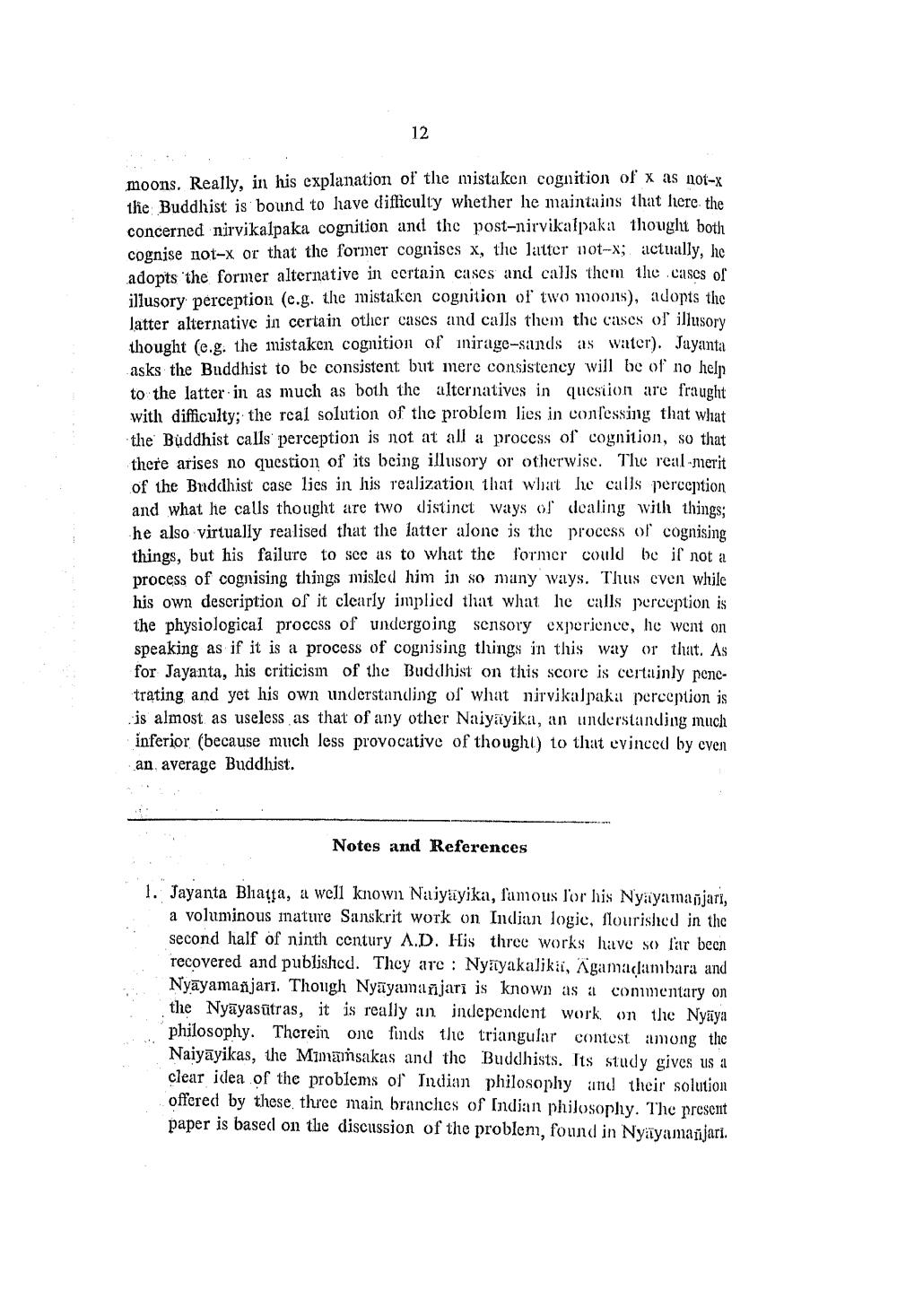________________
12
moons. Really, in his explanation of the mistaken cognition of x as not-X the Buddhist is bound to have difficulty whether he maintains that here the concerned nirvikalpaka cognition and the post-nirvikalpaka thought both cognise not-x or that the former cognises x, the latter not-X; actually, he adopts the former alternative in certain cases and calls them the cases of illusory perception (c.g. the mistaken cognition of two m00115), adopts the latter alternative in certain other cases and calls them the cases of illusory thought (e.g. the mistaken cognition of inirage-sands as water). Jayanta asks the Buddhist to be consistent but mere consistency will be of no help to the latter in as much as both the alternatives in question are fraught with difficulty; the real solution of the problem lies in conlessing that what the Buddhist calls perception is not at all a process of cognition, so that there arises no question of its being illusory or otherwise. The real-merit of the Buddhist case lies in his realization that what he calls perception and what he calls thought are two distinct ways of dealing with things; he also virtually realised that the latter alone is the process of cognising things, but his failure to see as to what the former could be is not a process of cognising things misled him in so many ways. Thus cven while his own description of it clearly implied that what he calls perception is the physiological process of undergoing sensory experience, he went on speaking as if it is a process of cognising things in this way or that. As for Jayanta, his criticism of the Buddhist on this score is certainly penetrating and yet his own understanding of what nirvikalpakil perception is is almost as useless as that of any other Naiyayika, an understanding much inferior (because much less provocative of thought) to that evinced by cven an average Buddhist.
Notes and References
1. Jayanta Blata, a well known Naiyayika, famous for his Nyayamanjari,
a voluminous mature Sanskrit work on Indian logie, Nourished in the second half of ninth century A.D. His three works have so far been recovered and published. They are : Nyayakalikii, Agamadambara and Nyāyamanjarī. Though Nyāyamañjari is known as a commentary on the Nyayasūtras, it is really an independent work on the Nyāya philosophy. Therein one finds the triangular contest among the Naiyāyikas, the Mimasakas and the Buddhists. Its study gives us a clear idea of the problems of Indian philosophy and their solution offered by these three main branches of Indian philosophy. The present paper is based on the discussion of the problem, found in Nyayamanjari.




